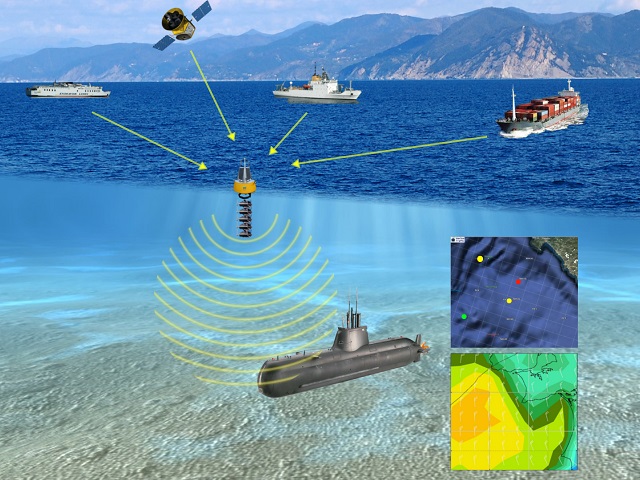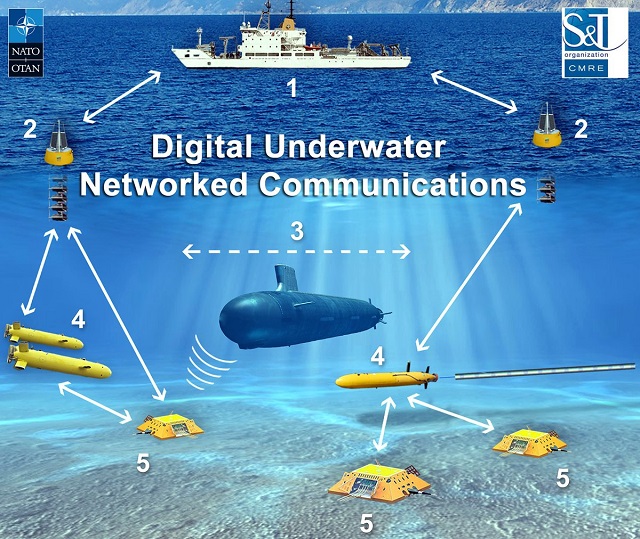|
|
|||
 Applications of JANUS are limitless. In the operational context, CMRE has already successfully tested the delivery of Automatic Identification System (AIS) data ? which consist of identification, position, course and speed of ships at sea ? and Meteorological and Oceanographic (METOC) information to underwater assets using JANUS-standardized acoustic communication. In the picture: the scheme shows AIS data (top box on the right) and METOC (bottom box on the right) information being delivered to a submarine using JANUS acoustic communication. Applications of JANUS are limitless. In the operational context, CMRE has already successfully tested the delivery of Automatic Identification System (AIS) data ? which consist of identification, position, course and speed of ships at sea ? and Meteorological and Oceanographic (METOC) information to underwater assets using JANUS-standardized acoustic communication. In the picture: the scheme shows AIS data (top box on the right) and METOC (bottom box on the right) information being delivered to a submarine using JANUS acoustic communication. |
|||
|
|
|||
|
JANUS, the standard underwater language
To be able to communicate with each other, underwater assets need common standards. “In the air we can simply connect our gadgets to any WiFi hotspot without having to worry about the compatibility,” says João Alves. “Until now, there wasn’t anything even remotely similar for the underwater domain.” As with the industry standard for WiFi communication, an undersea communication standard has to be defined in order to guarantee the interoperability between equipment from different manufacturers. For the past ten years, CMRE has been working on the development of the first international digital underwater communication protocol, known as JANUS, which is now an approved NATO standard. “JANUS was a Roman god of openings and gateways,” says John Potter. “That’s why it is called JANUS, because this language opens the portal between two domains, two different operating paradigms, through which they can talk.” “It is a digital underwater signalling system that can be used to contact underwater devices using a common format; announce the presence of a device to reduce conflicts; and enable a group of underwater devices (that can be underwater robots, submarines, divers or any other equipment operating under the surface) to organise themselves into a network,” adds John Potter. Adopted globally, JANUS can make military and civilian, NATO and non-NATO devices interoperable, providing them all with a common language with which to communicate and arrange to cooperate. JANUS has been extensively tested at sea in exercises involving a number of partners (universities, industries and research institutions) covering a range of application scenarios. Close collaboration with NATO Allies has been particularly fruitful in developing JANUS for use in cases that may improve the safety of maritime operations. For example, the Portuguese Navy has been working with CMRE to develop new concepts to support the exchange of crucial information with submarines (typically only available at the surface via radio) such as the location of nearby ships. Digital data exchanges to support rescue operations in case of a submarine incident are currently also being developed. |
|||
NATO Establishes the First Ever Digital Underwater Communications Standard
- Posted On











